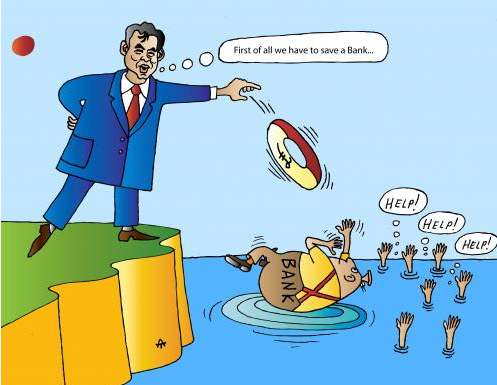What are Banks?
Joseph E. Stieglitz writes: The Third International Conference on Financing for Development recently convened in Ethiopia’s capital, Addis Ababa. The conference came at a time when developing countries and emerging markets have demonstrated their ability to absorb huge amounts of money productively. Indeed, the tasks that these countries are undertaking – investing in infrastructure (roads, electricity, ports, and much else), building cities that will one day be home to billions, and moving toward a green economy – are truly enormous.
At the same time, there is no shortage of money waiting to be put to productive use. Just a few years ago, Ben Bernanke, then the chairman of the US Federal Reserve Board, talked about a global savings glut. And yet investment projects with high social returns were being starved of funds. That remains true today. The problem, then as now, is that the world’s financial markets, meant to intermediate efficiently between savings and investment opportunities, instead misallocate capital and create risk.
There is another irony. Most of the investment projects that the emerging world needs are long term, as are much of the available savings – the trillions in retirement accounts, pension funds, and sovereign wealth funds. But our increasingly shortsighted financial markets stand between the two.
Much has changed in the 13 years since the first International Conference on Financing for Development was held in Monterrey, Mexico, in 2002. Back then, the G-7 dominated global economic policymaking; today, China is the world’s largest economy (in purchasing-power-parity terms), with savings some 50% larger than that of the US. In 2002, Western financial institutions were thought to be wizards at managing risk and allocating capital; today, we see that they are wizards at market manipulation and other deceptive practices. Savings and Investment

